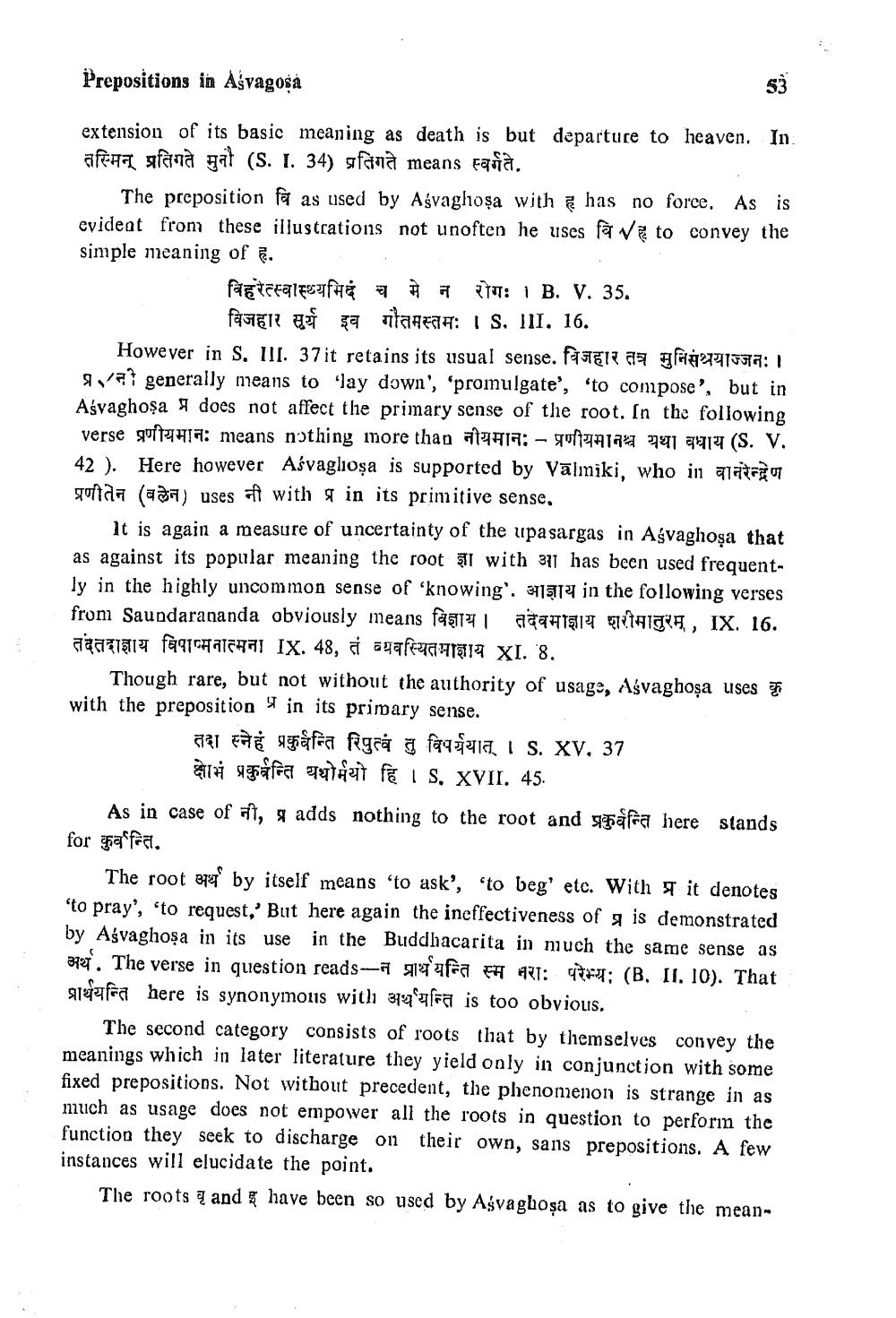________________
Prepositions in Ašvagosa
extension of its basic meaning as death is but departure to heaven. In aftha sfarà gat (s. I. 34) sfana means fana.
The preposition fa as used by Ağvaghoșa with has no force. As is evideat from these illustrations not unoften he uses fêve to convey the simple meaning of T.
fagtataifeaf # 119: 1 B. V. 35.
fazer a 59 anth: I S. III. 16. However in S. III. 37 it retains its usual sense. f a ag 27|17577: 1
et generally means to lay down', 'promulgate', 'to compose', but in Ašvaghoşa 7 does not affect the primary sense of the root. In the following verse sort418: means nothing more than 1 1a: - A124 991 7914 (S. V. 42). Here however Ašvagliosa is supported by Vālmiki, who in altro प्रणीतेन (बलेन) uses नी with प्र in its primitive sense.
It is again a measure of uncertainty of the upa sargas in Asvaghoşa that as against its popular meaning the root fl with 31 has been used frequently in the highly uncommon sense of knowing'. 31914 in the following verses from Saundarananda obviously means faş14 1 aasta tag7, IX. 16. gaan faq charchai IX. 48, a agafruarat XI. 8.
Though rare, but not without the authority of usage, Ašvaghoşa uses with the preposition in its primary sense.
aan Faggafia figca a faqjala. I S. XV, 37
H gráfia The Feel S. XVII. 45. As in case of at, & adds nothing to the root and safra here stands for gaffia.
The root by itself means 'to ask', 'to beg' etc. With it denotes 'to pray', 'to request,' But here again the ineffectiveness of gis demonstrated by Asvaghosa in its use in the Buddhacarita in niuch the same sense as 3427". The verse in question reads-- 'afea FH ART: +3; (B. II. 10). That प्रार्थयन्ति here is synonymous with अर्थयन्ति is too obvious.
The second category consists of roots that by themselves convey the meanings which in later literature they yield only in conjunction with some fixed prepositions. Not without precedent, the phenomenon is strange in as much as usage does not empower all the roots in question to perform the function they seek to discharge on their own, sans prepositions. A few instances will elucidate the point.
The roots q and have been so used by Ašvaghoşa as to give the mean




